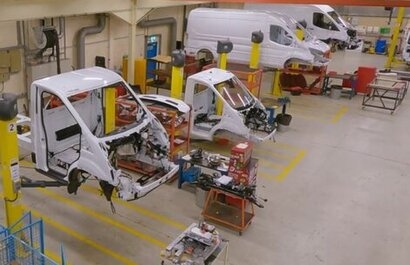
Prototype E-Transit vehicles will soon be joining customer fleets to operate in challenging real-world conditions with major businesses in the supermarket, home delivery, postal services and utilities sectors across Germany, Norway and the UK.
“Real-world trials are an important step on our journey to deliver the all-electric E‑Transit and will give us an even better understanding of how to help customers across different industries enhance their productivity using zero-emission power” said Andrew Mottram, E-Transit chief programme engineer, Commercial Vehicles, Ford of Europe.
Ford’s European customer trials form part of an extensive development programme for E‑Transit ahead of its launch in spring 2022. Beginning late summer this year, they have been designed to confirm that the all-electric van can comfortably meet the demands of a wide range of operating scenarios.
Ford engineers will use data from the trials to help refine E‑Transit’s next-level connected vehicle technology and range management features to offer an optimised operating experience for customers.
Prototype vehicles taking part in the trial – assembled at Ford’s global commercial vehicle centre of excellence in Dunton, UK – will include E-Transit van and chassis cab variants with conversions including refrigerated bodies, box vans, dropsides and interior racking. European E-Transit customers will be offered a generous choice of body, length, roof height and Gross Vehicle Mass options from launch, giving 25 possible variants to suit a wide range of businesses.
E-Transit’s load area is common with diesel-powered Transit models for ease of conversion, and to allow Transit operators to reuse existing racking with the all-electric van. An industry-first ProPower Onboard system delivers up to 2.3kW through standard plugs to power conversions and equipment in the cab and load area. Anticipated payload is up to 1,616kg for vans and up to 1,967kg for chassis cab models.
The E-Transit’s all-electric powertrain delivers up to 200kW of power for a targeted WLTP range of up to 217 miles, supported by range-boosting technologies including Eco Mode and Scheduled Pre-Conditioning. Operators will additionally benefit from new SYNC 4 technology including an easy-to-use 12-inch screen and available cloud-connected navigation, enhanced through automatic wireless Software Updates.
Ford expects service cost of ownership to be approximately 40 per cent lower compared with internal combustion engine-equipped models, as a result of lower maintenance expenses.
For additional information:

